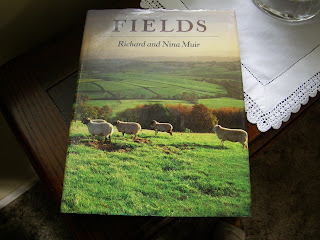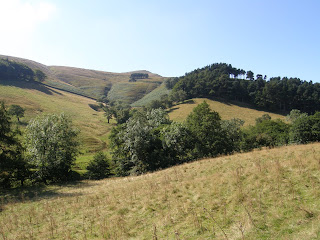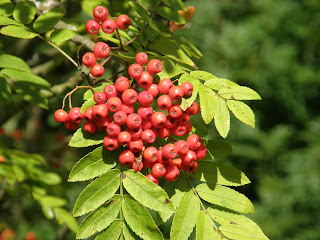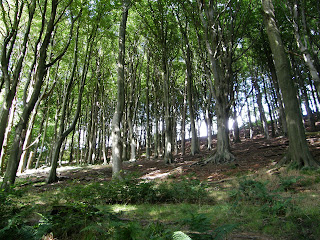
I've always been a fan of Agatha Christie and she is is well known for her Poirot and Miss Marple books. Less well known is the fact that she was married to the eminent archaeologist Max Mallowen and she accompanied him on all the digs that he did in what is now Iraq. In fact she became the expedition photographer and catalogued and labelled all the finds. It was from these expeditions that she got the background material for some of her most famous novels such as Appointment With Death and Murder in Mesopotamia and also for Murder On The Orient Express - she always travelled by the Orient Express on her way out to the Middle East - how I would love to have done that fabulous journey travelling First Class on this legendary train:)
I'd actually never heard of Come Tell Me How You Live until a few years ago when I went to a special exhibition at the British Museum called Agatha Christie and Archaeology. It was absolutely fascinating and I thoroughly enjoyed it and at the end I discovered in the shop this book. I bought it on impulse and am very glad that I did. It is a light-hearted and very amusing account of her life when she was on these digs. Well worth trying to find a copy of if you are interested in either Agatha or archaeology.

It must be pretty obvious from the dog-eared appearance of this book that I have read it several times! As long as I can remember I've had a fascination for the Second World War - not the fighting but the everyday lives of women and how they coped with life. These diaries of Clara Milburn were discovered and published in the late 1970s and I find them absolutely rivetting. She was an ordinary middle-aged, middle class woman who kept a diary right through the war detailing the ordinary everyday things that happened interspersed with war news as they heard it on the wireless or read it in the newspapers. She wrote about her garden, rationing and the food they ate, her clothes, the dog,the weather, nights in the air raid shelter - it is all so immediate that you are taken back into her world and worry with her about her son who is a prisoner of war and share her delight when letters arrive from him.

One of the things I love to see when I fly over England is the patchwork quilt of fields which are unique to this country - this book is about these fields,the hay meadows, pasture, water meadows and arable land and the history of agriculture which has shaped them. Together with this it tells of the wildflowers and wildlife which lives on and around them in the hedgerows,drystone walls and the wooded copses. Apart from history and ecology it is full of wonderful photographs of both the countryside and the plants and animals that live there. Just right for someone exiled on a desert island:)

Norfolk Life by Lilias Rider Haggard is another book about country life in England but between the wars this time - my favourite period apart perhaps from medieval/Tudor times. Lilias lived in Norfolk and was the daughter of H Rider Haggard who wrote 'King Soloman's Mines' and 'She', both of which were made into famous films. They were minor landed gentry and the book gives a fascinating insight into the life of a woman who had no need to work for a living, she was intelligent and had many interests but was essentially a countrywoman. From this particular book I'm going to put a tiny excerpt to give you a flavour of her writing:
The snow-flood is coming down the river, and a steadily rising tide of turbid water creeps over the marshes. This afternoon the Common lay without a sound, a flat, grey expanse up to the low hills on the horizon, where the woods lie black against the sky. Behind them the sun, a furious ball, was sinking through a pall of mist. A solitary swan was moving in the sunset waters of the river. Suddenly there was a winnowing of many wings, a strange whistling call, and out of the mist seven wild swans swept down with necks outstretched,and settled on the water in a flurry of spray. They floated there almost motionless while the fire on the water faded to the steel grey of the sky, and only their plumage was flamingo pink. It was like the fairy-tale of the enchanted swans, but in February one would search in vain for enough nettles to weave seven shirts for their disenchantment.
Of all the books I've written about, this is the one I would choose ahead of all the others. Incidentally, if you are wondering about the nettles - if you cut nettles and leave them lying under a hedge through autumn and winter to rot you can obtain lengths of fibre from what is left that can be spun just like flax and used to make cloth. I hasten to say that I have never done it, I just know it's possible:)

This book is here because it's a reminder of the best and most interesting holiday I've ever had. A group of us went regularly on archaeology/classical based trips, visiting all kinds of mostly Greek and Roman sites with a couple of free days to do our own thing. Evenings involved good food and quite a lot of wine:) Jordan is a fabulous country just packed with interesting things to see - the Dead Sea, the Rose Red City of Petra, Jerash, Mount Nebo( where Moses looked out over the Promised Land),Crusader castles, the desert where Lawrence of Arabia spent a lot of time and all sorts of other things. Driving out in the desert in an open top jeep is quite an experience, so is walking on the red hot sand! The food is wonderful, the people are friendly and polite and the weather is great. The final couple of days we spent in Aqaba which has a beautiful beach, warm sea and glass bottomed boats that take you out to see coral reefs in the clear waters of the Red Sea. This book has masses of pictures and the history of the places nearly all of which I've seen. I know I sound like a travel brochure but if ever you get the chance to visit Jordan, take it - you'll love it.

Finally, another gardening book. I bought this in 1986, the year it was published. The author, Stephen Lacey, was only 29 and though he's written other books since none has come even close to The Startling Jungle, it has passion for the subject, great knowledge and lyrical descriptions of the flowers and foliage which make you want to rush out and get every one of them to grow in your own garden. This is another book which bears evidence of the number of times that I've read it.
You may have noticed something about the books I've chosen, they are almost all written in or about the 1930s and 1940s, those that aren't are written about aspects of an even more remote past - an indication of the fact that I don't find the modern world especially attractive. A desert island would probably suit me very well:)










































